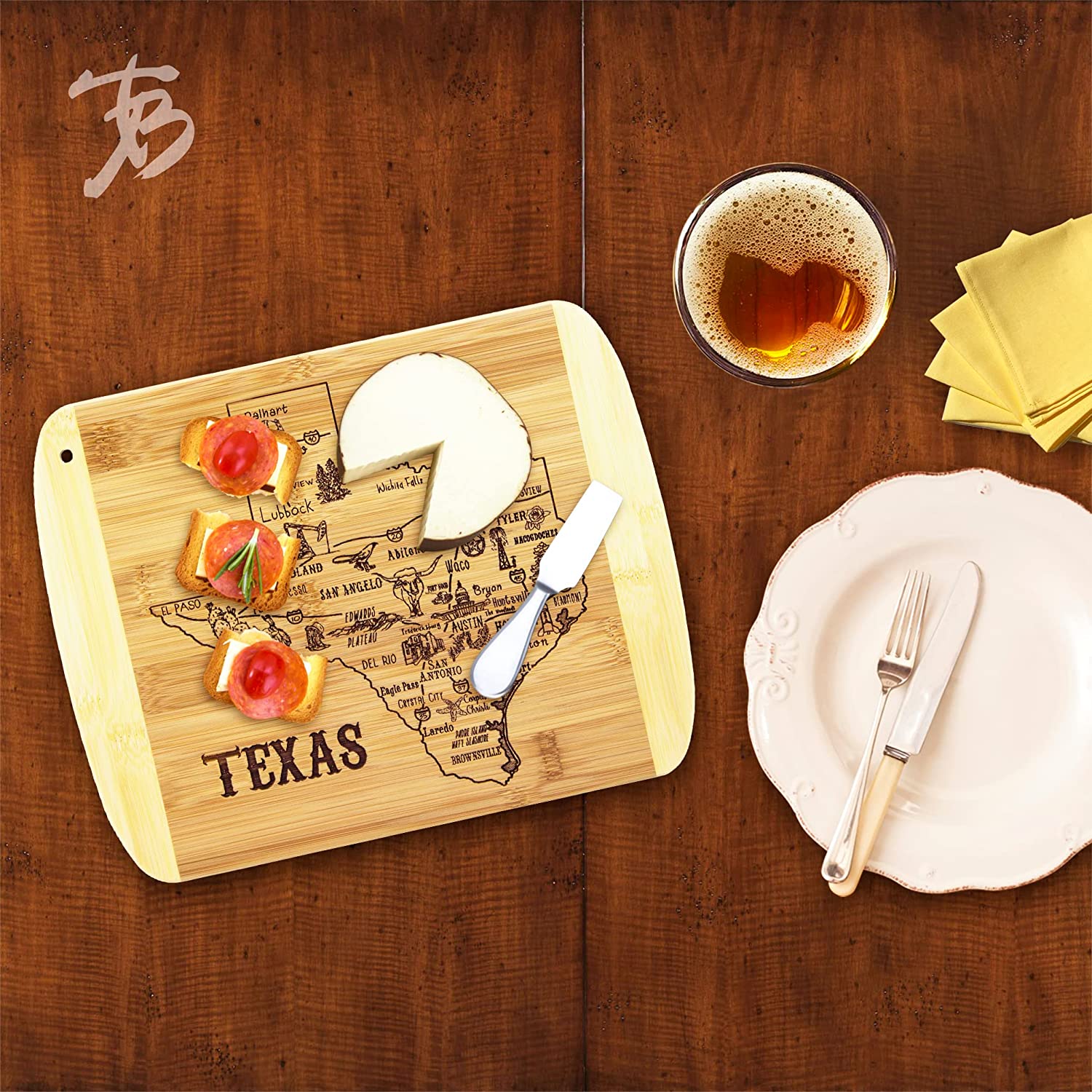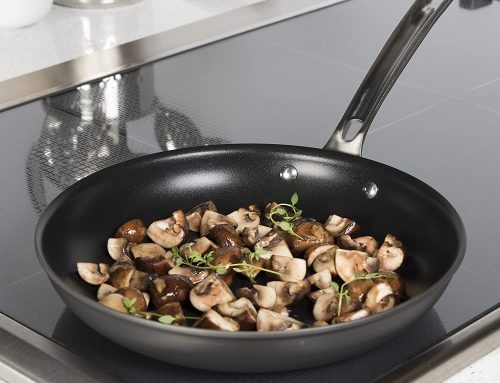The kitchen can be minimalist or fully equipped with utensils, but there are key elements that must not be neglected. One of these elements is the cutting board. Every kitchen should have at least one, and it is important to choose the right one. In this article, we will discuss how to choose the best cutting boards for your kitchen.
The cutting board is an essential item in any kitchen. It is important to choose the right one for the intended purpose. While presentation or service boards can look beautiful on the table, it is the work ones that will be most useful. Cutting boards come in various materials, sizes, and prices. So it is important to consider your specific needs and preferences when making a purchase. Factors such as material, size, thickness, maintenance, and hygiene should be considered. Taking proper care of your cutting board will ensure its longevity and performance in the kitchen.
Why do you need at least one good cutting board?

Consider the material
There are several options available, including wood, plastic, bamboo, and glass. Wood is a popular choice due to its durability and natural beauty. But it requires regular maintenance to avoid warping and cracking. Plastic cutting boards are easy to clean and can be put in the dishwasher. But they tend to wear out faster than other materials. Bamboo is a sustainable and eco-friendly choice, but it can also be prone to warping. Glass cutting boards are easy to clean and hygienic, but they can dull knives quickly.
Consider the size and thickness
The size should be appropriate for the tasks you will be performing. And, the thickness should be sufficient to prevent the board from warping over time. A thicker board will also provide more stability while cutting.
Consider the level of hygiene
Plastic and glass cutting boards are non-porous and easy to clean. Making them a good choice for those who prioritize hygiene. Wood and bamboo cutting boards, on the other hand, are porous and may require more thorough cleaning to avoid bacteria buildup.
Of course, we can start cooking without using a kitchen board, but it is not highly recommended beyond certain quick improvisations. Almost any recipe requires handling some ingredients, and having a good cutting board for food is essential. It allows the products to work correctly, and comfortably and facilitates organization, order, and also safety.
If the knives are a key tool, so is the cutting board on which we are going to use them, so as not to damage them. We will not get good cuts if the surface moves are unstable, too hard, or too soft. It should be the right size and clean, free of foreign odors, and safe from bacteria or cross-contamination.
On a board, we can cut, chop, dice, peel, and laminate, and also prepare ingredients with our hands or with other kitchen utensils. The ideal is to have at least two, one for vegetables and the other for meat and fish, although I prefer to work with seafood on a different cutting board. The care will be greater if we have intolerant or allergic people in the family.
How to take care of your cutting board

It is also important to consider the maintenance required for the cutting board. Wood cutting boards require regular oiling to maintain their appearance and prevent warping. Plastic and bamboo cutting boards can be cleaned with soap and water, but they may need to be replaced more frequently. Glass cutting boards are easy to clean but can be prone to cracking and breaking.
Whichever cutting board we choose, it is important to consider some basic care to keep them in perfect condition for longer. First, we must handle them correctly, away from heat sources, avoiding blows, and very abrupt cuts and not placing very heavy things on top.
Also for hygiene and food safety reasons, they should be washed immediately after use. The synthetic ones admit the dishwasher, but the wooden ones will have to be cleaned by hand. Simply with lukewarm water, detergent, or neutral soap, and a soft scouring pad or sponge will do just fine. To eliminate possible odors we can wash them from time to time with lemon juice and salt. Those made of wood require applying a layer of oil from time to time.
Another important point is storage. It is best to dry them thoroughly after cleaning, and preferably store them in the air. Moisture could accumulate in drawers and cabinets, which not only spoils them but can also be a source of bacteria and bad odors.
Wooden boards

They are the most traditional and also the most beautiful. We know from different studies that they are also safer against possible bacteria. Of course, there are different woods, with different finishes and prices. The most common are beech, olive, maple, oak, or bamboo.
Olive wood is one of the most attractive, with a very pleasant silky touch. They tend to be more expensive. So it is advisable to use them only for soft cuts and to show them off at the table, for example with a cheese or sausage board. The French house Berard is one of the oldest specialized in wood, with models like this rectangular cutting board with a handle, at 15 dollars, this other with a heart at 25.53, or the classic round one for 52.17.
Beech wood is more suitable for daily use in the kitchen. Because it is softer, and therefore less aggressive with the edge of the knives. There are many recognized manufacturers with a wide catalog of these woods, such as the British T&G Woodware, of which we have, for example, this large rectangular table with a groove for liquids, for 26.67 dollars, or this oval one for 24.95. Also interesting is the sustainable table from the German Schwarzwald Massivholz, on offer at 26.99 dollars, or the set of three Zeller cutting boards for 11.04 dollars.
Bamboo is one of the most used woods today because it is an easy-to-obtain, hard, and resistant material, with good properties against bacteria. The typical large table from Ikea Lamplig that protects the countertops is made of bamboo, great to give it a lot of use, and costs 16.99 dollars. At Amazon Basics we have this interesting set of three rectangular tables of different sizes, on offer at 14.99-26.65 dollars. If what we are looking for is a large cutting board, this one from Twinzee could be a good option, reduced to 24.90 dollars. Also on sale is Zwilling’s most solid and firm model, with a large surface, at 44.95 dollars.
Cutting board of synthetic materials
Synthetic cutting board– “plastic”, to understand us-, can also be very valid if they are chosen well. There are very cheap basic ones but they break down easily, so it is better to invest in a good brand that offers long-term guarantees. Polypropylene and reinforced synthetics wear less, do not accumulate odors, and are safer. Among its advantages, it stands out that they are usually cheaper, lighter, and can be put in the dishwasher.
They are also the favorites of those looking for more modern and current designs. A classic is already the Joseph & Joseph game, four boards in different colors for each food group that is conveniently stored in the same place. It costs 48.18 dollars. The WMF house has the interesting Touch model with two materials, for a better grip and cut without slipping, and you can choose the color; It comes out to 19.95 dollars.
Kitchen Craft, they have practical models such as the Colourworks range, at 15.34 dollars, or the MasterClass with non-slip corners at 24.58. Lacor for its part has its set of three color tables on offer at 17.82 euros, and Arcos offers us a different material, cellulose fiber with resin. It is very resistant and light, and the 33 cm model costs 23.77 dollars. For its part, the Finnish house Fiskars has an interesting table that combines a birch wood base with an interchangeable plastic table and is reduced to 33.48 dollars.
There are other materials such as stone, slate, granite, glass, or marble. But I think they are more suitable for serving and presenting than for use in the kitchen. How many kitchen tables do you have at home? What material do you like the most?
Conclusion
Choosing the best cutting board for your kitchen depends on several factors, including material, size, thickness, maintenance, and hygiene. Consider your specific needs and preferences before making a purchase. Be sure to take proper care of your cutting board to ensure its longevity and performance.









Leave A Comment